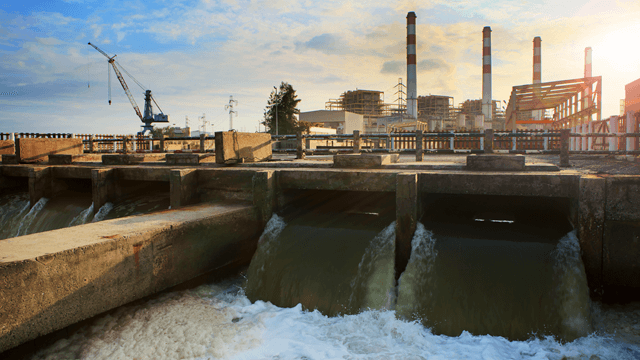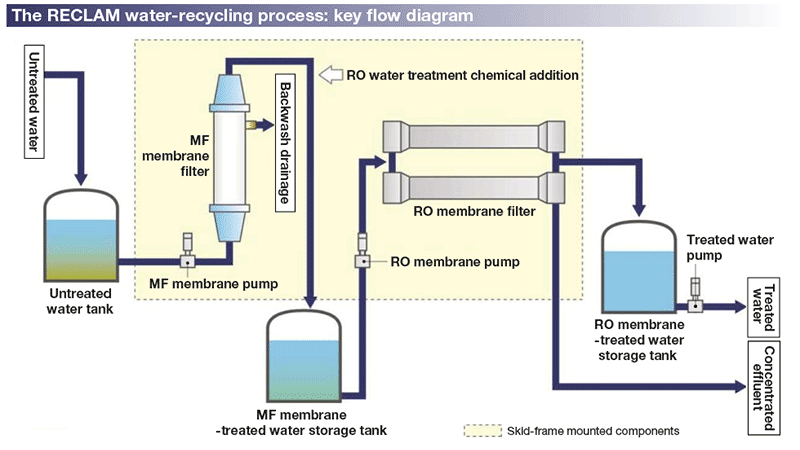Industrial Waste Water Treatment-- Advanced Solutions for Cleaner Effluents
Wiki Article
Key Techniques in Industrial Waste Water Treatment Procedures
The treatment of commercial wastewater is a critical element of environmental management, entailing a series of strategies made to mitigate the effect of contaminants. From the basic physical techniques that separate solids to the sophisticated chemical and organic processes that target certain pollutants, each technique plays a vital function in achieving water high quality standards. In addition, developments in modern technologies such as membrane purification and advanced oxidation processes offer ingenious solutions for improving therapy efficacy. Comprehending just how these methods interconnect and their effects for sustainability raises crucial inquiries about the future of wastewater administration in sector.Physical Treatment Techniques
How successfully can physical therapy techniques attend to the intricacies of industrial wastewater? Physical therapy approaches play a pivotal function in the initial phases of wastewater administration, concentrating mainly on the elimination of solids and large particulates. Strategies such as sedimentation, filtering, and flotation protection are crucial for minimizing the concentration of suspended solids, thereby enhancing the efficiency of succeeding treatment processes.Sedimentation entails the gravitational settling of solids, allowing for the separation of larger materials from the wastewater. This method is specifically reliable in clearing up water before biological or chemical therapies. Purification, on the various other hand, utilizes various media to catch particulate issue, making certain that smaller contaminants are gotten rid of. This method can be customized to fit different types of commercial effluents, creating more clear effluent streams.
In addition, flotation approaches, which utilize air bubbles to raise suspended solids to the surface area for elimination, work in dealing with wastewater with high concentrations of fats, oils, and oils. In general, physical therapy methods work as a vital primary step in the thorough management of industrial wastewater, making certain that the load on subsequent therapy stages is reduced and boosting overall treatment efficiency.
Chemical Therapy Techniques
While physical therapy techniques lay the groundwork for efficient wastewater management, chemical treatment methods are vital for attending to the extra intricate pollutants usually located in industrial effluents. These approaches utilize numerous chemical agents to speed up, neutralize, or oxidize dangerous substances, making certain a more thorough removal of toxins.
One common technique is coagulation and flocculation, where chemical coagulants such as aluminum sulfate or ferric chloride are contributed to advertise the aggregation of suspended fragments. This procedure improves solid-liquid splitting up, reducing turbidity and enhancing water top quality. Additionally, neutralization processes are used to readjust the pH of wastewater, using acids or bases to counteract acidic or alkaline streams, respectively.
Oxidation-reduction responses play an essential function in derogatory natural pollutants and microorganisms. Chemical oxidants like chlorine, hydrogen, or ozone peroxide are used to damage down complex organic compounds, making them less dangerous or extra naturally degradable. Moreover, progressed oxidation procedures (AOPs) incorporate numerous oxidation techniques to enhance pollutant removal efficiency.
Biological Treatment Processes
The effectiveness of wastewater treatment is significantly enhanced by biological therapy procedures, which harness the natural metabolic activities of bacteria to decay raw material and eliminate toxins. Industrial Waste Water Treatment. These processes primarily involve aerobic and anaerobic food digestion, each customized for certain sorts of wastewaterAerobic treatment procedures make use of oxygen to sustain microbial growth, promoting the breakdown of natural toxins into carbon dioxide and water. Usual approaches consist of triggered sludge systems, where aeration containers promote the mixing of wastewater with microorganisms, and trickling filters, which urge biofilm advancement on media surfaces.
Conversely, anaerobic therapy processes occur in the lack of oxygen, using anaerobic bacteria discover this info here to decay raw material, resulting in biogas production, a renewable power source. Anaerobic digesters are frequently used in industrial settings for this function, efficiently lowering the volume of sludge while generating useful biogas.
The selection of an organic treatment approach depends on wastewater features, treatment objectives, and regulative criteria. The combination of organic processes in wastewater therapy not only improves pollutant removal efficiency however additionally promotes sustainability by minimizing like it chemical use and supporting resource recuperation.
Advanced Oxidation Processes

Typical AOP strategies include Fenton's reagent, ozonation, and photocatalysis. Fenton's reagent, a mix of hydrogen peroxide and ferrous iron, militarizes the development of hydroxyl radicals, making it effective for treating wastewater having phenolic substances and other recalcitrant materials.
AOPs provide numerous advantages, including decreased sludge manufacturing and the ability to treat wastewater with high concentrations of natural pollutants. The execution of AOPs calls for careful consideration of operational parameters and cost-effectiveness, guaranteeing that these sophisticated methods are suitably incorporated right into existing wastewater therapy systems.
Membrane Layer Filtering Technologies

Microfiltration works for eliminating put on hold bacteria and solids, while ultrafiltration targets smaller organic particles and infections. Nanofiltration links the void between ultrafiltration and reverse osmosis, efficiently eliminating divalent ions and natural substances. Reverse osmosis offers the greatest level of filtration, utilized largely for desalination and getting rid of mono-valent ions.
Membrane layer technologies anchor supply numerous advantages, including low energy usage compared to typical therapy methods, modular design for scalability, and the potential for water recovery and reuse. Difficulties such as membrane fouling and the need for regular maintenance have to be resolved to make certain system efficiency. Generally, membrane filtration technologies stand for an essential part of contemporary industrial wastewater treatment approaches, advertising sustainability and source conservation in water management.
Verdict
In verdict, commercial wastewater therapy uses a varied range of techniques, consisting of physical, chemical, biological, and advanced techniques. Each method plays a vital duty in successfully attending to various impurities, improving water quality, and advertising resource sustainability. The assimilation of these methods cultivates a thorough treatment approach, making sure that industrial effluents satisfy regulatory requirements while reducing ecological impact. Proceeded advancements in these techniques will better improve the performance and effectiveness of wastewater therapy procedures in industrial setups.The therapy of commercial wastewater is an important aspect of environmental monitoring, involving a range of strategies created to mitigate the impact of pollutants.Just how effectively can physical treatment techniques deal with the intricacies of commercial wastewater?Advanced oxidation procedures (AOPs) stand for a cutting-edge method in commercial wastewater therapy, made to effectively degrade organic contaminants that are commonly immune to standard therapy approaches (Industrial Waste Water Treatment).In verdict, commercial wastewater therapy uses a varied range of methods, including physical, chemical, biological, and advanced methods. Continued developments in these approaches will even more improve the efficiency and effectiveness of wastewater treatment procedures in commercial setups
Report this wiki page